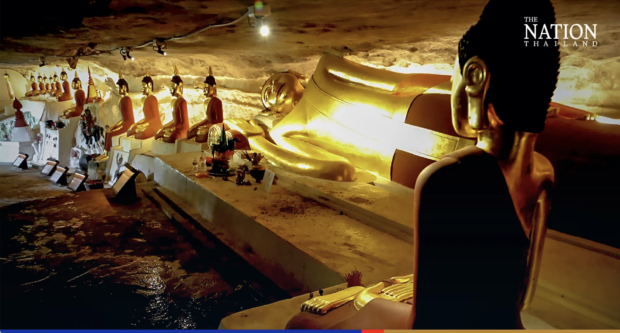
The Nation/Asia News Network
BANGKOK — Pilgrims and monks have been seeking enlightenment in the dripping caves of Wat Tham Talot temple for the past 350 years.
Now, the spiritual echoes of that quest are once again reaching tourists as Thailand’s famed temple of the deep South reopens its doors after Covid.
Wat Tham Talot was founded deep in the belly of the mountainside in 1676 during the Ayutthaya period.
Today it serves the Mahayana worshippers of Saba Yoi district, Songkhla, as well as being a tourist destination where nature blends with Buddhism in elemental harmony.
Visitors are confronted at the entrance by the fearsome glare of a green giant.
Thao Wessuwan is one of Thao Chatulokaban, or Four Guardians of the World who protect Buddhism and its spiritual secrets.
Tourists who risk his wrath and venture inside will find a spectacular eight-meter golden reclining Buddha gleaming from the darkness of the main chamber. Nearby sits the centuries-old image of Tuad Yang, a wealthy Malaysian benefactor who furnished the cave with religious treasures.
The temple also drips with geological wonders, as the stalagmites of Tuad Yang, Maha Ut and Khon Tham chambers compete for visitors’ gaze with angels, Garuda and Naga carved from the stone by local craftsmen.
Wat Tham Talot also comes with a rich religious history, befitting its venerable age.
It was one of the places where the body of renowned Thai monk Luang Pu Thuat was placed, 350 years ago, before being enshrined at Wat Rat Buranara (Wat Chang Hai) in Pattani, where he was abbot.
Luang Pu Thuat won renown for the many miracles he is said to have performed. He died in Malaysia on March 6, 1682, but is still revered today in amulets worn by Thais all around the country.
RELATED STORIES
Thailand’s Wat Pho temple explains ban on foreign visitors
Famed Thai temple bars foreigners entry over COVID-19 fears